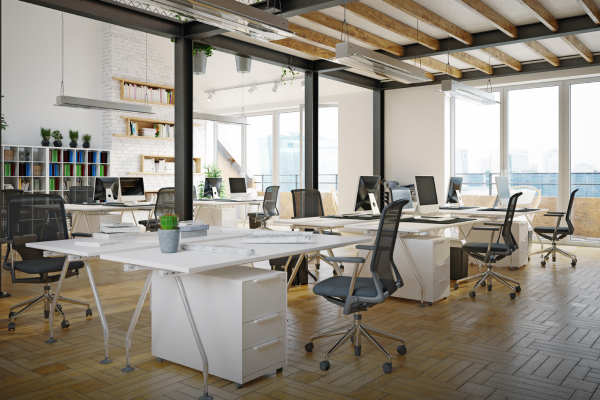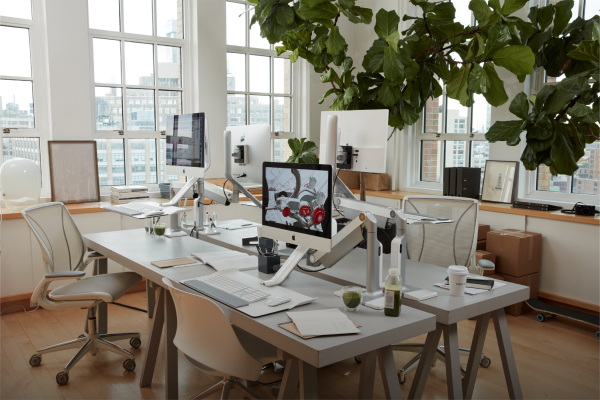Creating Productive Workspaces: Interior Design Tips from Dubai’s Leading Fit-Out Experts
Ever notice how some offices just feel easier to work in? You find the right balance between energy and calm, focus and flow. That feeling isn’t random it’s the result of smart design.
Dubai’s offices are changing fast. Teams today need spaces that help them work better, not just look modern. The focus has shifted from luxury fit-outs to functional interiors that reduce fatigue, improve collaboration, and use space efficiently.
Here’s what experienced designers in Dubai consider when turning ordinary workplaces into productive, comfortable environments and how each choice impacts the way people work.

1. Layout That Matches the Way You Work
The best office layout is never one-size-fits-all. An advertising agency, a law firm, and a tech startup each function differently and their layouts should reflect that.
In Dubai, where office real estate is premium, planning how people move through a space is critical. Open layouts promote collaboration but can also lead to distractions. Zoning areas for quiet work, informal meetings, and client discussions keeps productivity balanced.
A thoughtful layout also helps with light distribution and air circulation two factors that directly affect energy and comfort. Good design begins with understanding workflow before placing a single desk.
2. Lighting That Works With, Not Against, You
Lighting defines how people feel throughout the day. Harsh, uniform lighting causes eye strain, while dim corners lower alertness.
In many Dubai offices, glass façades bring in ample daylight but too much sunlight can raise indoor temperatures. That’s where controlled natural light comes in: adjustable blinds, diffused panels, and warm-toned LEDs that mimic daylight rhythm.
When lighting matches the body’s natural rhythm, people stay alert longer and feel less tired. The difference between “just another office” and a productive one often begins with light that supports people, not blinds them.
3. The Role of Colour and Texture
Colour psychology plays a real role in how we think and behave. Blues and greens help with focus, while muted tones create calm in meeting zones.
In Dubai’s competitive business environment, design trends have shifted away from bright, brand-heavy walls to balanced palettes that age well and support concentration.
Texture adds another dimension matte finishes, wood accents, and subtle patterns create depth and warmth without distracting from work. The right mix of colour and texture keeps spaces inviting without looking cluttered.
4. Ergonomics and Comfort: The Unseen Productivity Tools
Ergonomics might not sound exciting, but it’s what keeps teams healthy and consistent. Adjustable desks, supportive chairs, and thoughtful screen placement prevent strain and long-term discomfort.
Dubai’s humid climate also calls for better air conditioning planning. Overcooling can lead to fatigue and discomfort, while uneven airflow causes hotspots in open-plan spaces.
Productivity doesn’t come from long hours alone it comes from physical ease. A well-designed workstation can reduce sick days and improve overall morale, both of which directly impact company performance.
5. Smart Use of Technology
Technology has quietly become part of interior design. It’s not just about screens and conference setups anymore. Smart sensors control lighting and air conditioning based on occupancy. Meeting rooms use digital booking panels. Even acoustic systems are designed to adapt to crowd levels.
In Dubai’s fast-paced offices, automation saves time and reduces operational waste. But integration must happen early retrofitting systems after construction often costs double.
Smart design is not about adding gadgets; it’s about using technology to make daily operations smoother without increasing maintenance.
6. Acoustic Planning: The Overlooked Essential
Noise is one of the biggest productivity killers in modern offices. Open layouts often amplify sound, making concentration difficult.
Designers now focus on acoustic zoning using sound-absorbing panels, textured walls, and ceiling baffles to reduce echo. In high-energy environments like sales floors, smart sound planning ensures conversations don’t spill across zones.
Even small design decisions like carpeted walkways or felt-backed partitions make a significant difference in how teams focus.
7. Sustainability and Energy Efficiency
Dubai’s construction scene has seen a major shift toward green interiors. Offices are now expected to be energy-efficient, from LED systems to recycled materials.
Efficient air-conditioning systems and low-VOC paints not only meet sustainability standards but also improve indoor air quality a factor directly tied to employee wellbeing.
Sustainable doesn’t mean expensive. It’s about smarter material selection and long-term thinking. A small upfront investment in efficient systems often pays back within two to three years through lower utility costs.
8. Designing for Hybrid Work
Hybrid work has permanently changed how offices function. In Dubai, where global teams often work across time zones, flexibility is key.
Modern interiors are designed with “multi-use” in mind spaces that can shift from collaborative zones to quiet work areas depending on the day. Modular furniture, movable partitions, and wireless setups give teams the freedom to use space differently without major changes.
A productive workspace now supports movement and choice two things that help employees stay engaged and balanced.
9. Culture, Identity, and Design
A well-designed workspace quietly communicates company culture. For instance, an architecture firm may prefer raw materials and open ceilings to reflect creativity, while a finance office may lean toward structured layouts and calm tones.
Dubai’s diverse workforce means offices often need to blend multiple identities global sensibilities with regional expectations. The goal isn’t uniformity; it’s to make people feel included and inspired within the same space.
10. The Human Element
No amount of design detail works without listening to the people who will use the space.
Fit-out professionals in Dubai often begin by talking to employees, not just managers asking what slows them down or what helps them focus. The feedback directly informs spatial layout, storage, and lighting choices.
In the end, the most productive offices are the ones designed around their people, not imposed on them.
Conclusion
A productive workspace isn’t built overnight. It’s the result of hundreds of small, well-informed choices light, air, material, colour, and function all working together.
In Dubai, where businesses are constantly evolving, commercial interiors that prioritise practicality over trend will always stand the test of time.
The next time you step into an office that feels calm yet efficient, remember it didn’t happen by chance. It was designed that way.

